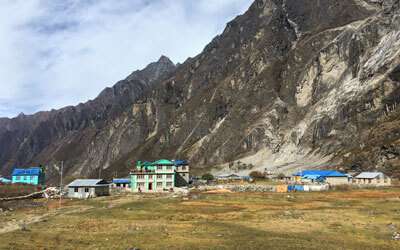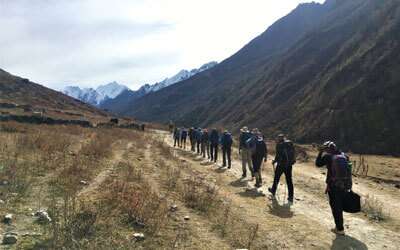The Langtang Gosaikunda trek offers an opportunity for the trekkers and adventurers to follow in Bill Tillman’s wake and rediscover the Himalayan passes, pristine valley, and diverse ethno- culture he found in 1949. Though easily accessible from Kathmandu Langtang region still remains relatively unspoiled and less developed trekking in Nepal. Several great days of pleasant Langtang Gosainkund trekking through dense forest and traditional ethnic settlements takes you to the holy Gosaikunda Lake and alpine yak pasture of Kyanjin Gumba, while the view of the mountains is genuinely inspiring. Over the years this Gosainkunda has become one of the sacred pilgrimage sites for Shamans, the traditional witch doctors, as well as many Hindu and Buddhist devotees. A cross over the Laurebina Pass at an altitude of 4620 meters with an excellent view of Tibet is simply breathtaking.
This 14 days trekking in the sacred valley of Langtang region is another spectacular trek that includes the holy Gosaikunda Lake at an altitude of 4380m/14,370ft which remains frozen for 6 months in the winter. Though a less visited area Langtang happens to be the most popular destination which is one of its kind also very commonly known as the home of red pandas. The settlement in this region dates back to 300 years when Tibetan migrants traveled and took refuge who now consider themselves to be the Tamangs this is the reason why in their day to day life Tibetan culture still reflects, unlike the Tamangs. Despite them being the Tibetan origin- the charismatic views of the mountain, the generosity of the people, and the flawless surroundings create a center of attention for thousands of tourists every year. Walking on the trail of the longstanding forest of rhododendron through a time-honored Tamang settlement with a majestic mountain views at the backdrop is beyond belief.


